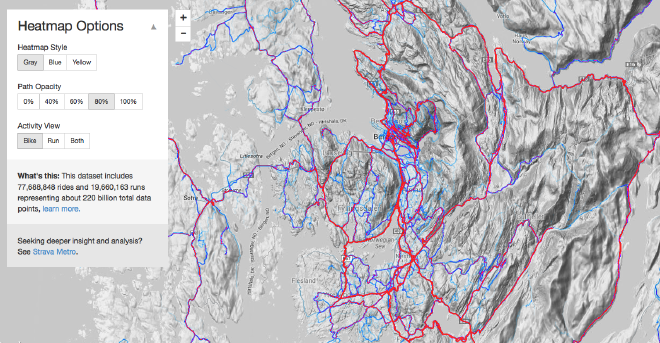Strava is helping to build better bike lanes
Current methods of counting cyclists take a ton of time or a ton of money. The DOT can videotape traffic and have someone sit at a monitor and count cyclists, or it can send someone to sit on the sidewalk and watch them go by in real time. Neither method is terribly efficient.
You’d think that the problem of building cycling lanes is a simple one, right? Well, it’s not. Apparently most cities struggle with obtaining data; no one really knows where and how many cyclists ride, and the only method available until now was installing bike counters, but these are expensive and measure bicycle traffic only at fixed points. So now, apparently, you can buy data from Strava, and this is brilliant.1
Strava is my favorite sport-tracking service (I wrote about it before), and it’s found a new and somewhat surprising source of revenue – selling “heatmaps” to cities.2 Heatmaps are created by analyzing publicly available GPS data from users’ rides and mapping them to frequency. For example, this is a heatmap for Bergen:
Some say that Strava isn’t popular amongst commuters, and that it’s mainly used by people who treat cycling as sport, and not just a mean of transportation, but as is clearly visible on the screenshot above, racers need to get through town just like anyone else; I’d conjecture they need to do this even more often than others.
Anyways, I just wanted to point everyone’s attention to the Wired article, because:
- it’s very good and you should read it;
- I envy Strava the brilliant idea of “heatmaps”;
- it makes me wanna seriously consider a career as a Data Wrangler.
